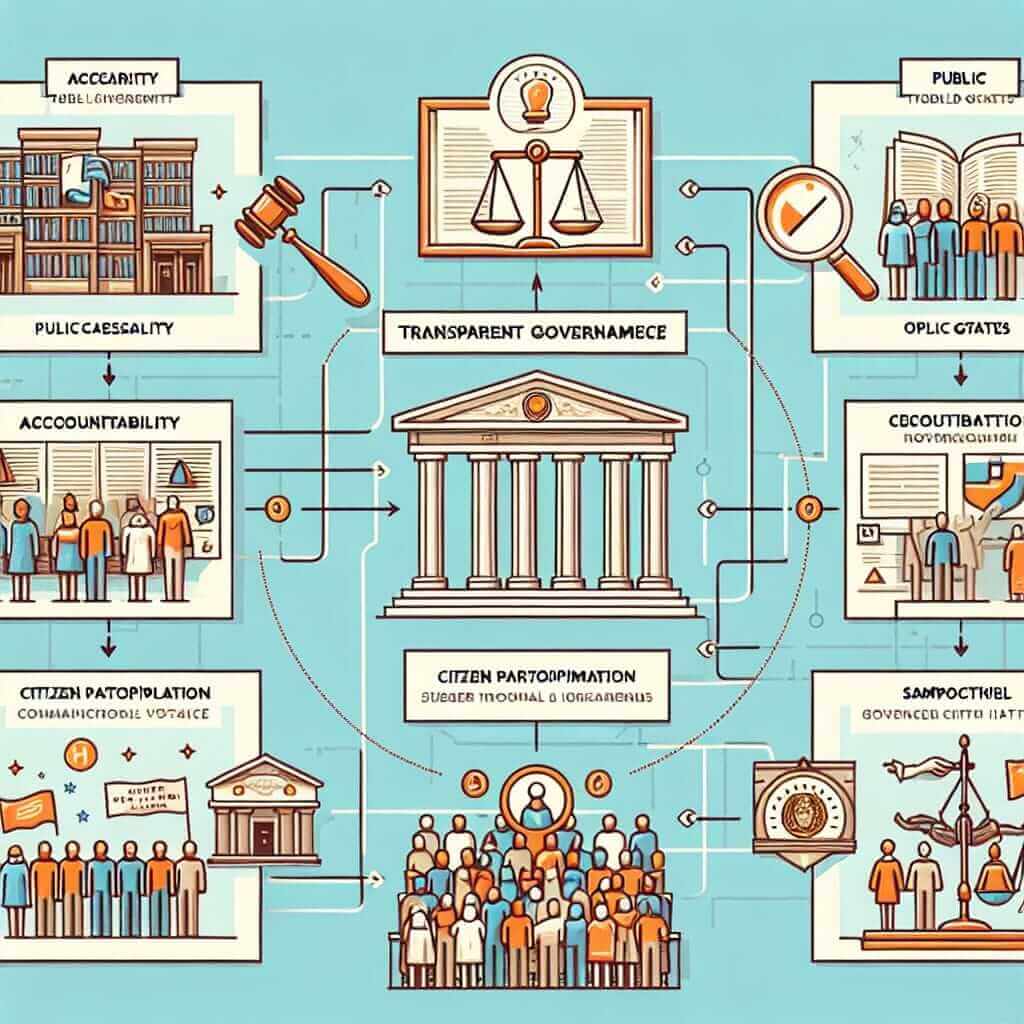Transparency in governance is a pivotal topic consistently featured in various discussions and research, particularly in the realm of political and social sciences. This subject holds significant importance on both global and local scales and frequently appears in IELTS Writing Task 2 prompts. In this article, we delve into the concept of transparent governance, its implications, and provide a sample IELTS essay along with detailed analysis and insightful guidelines for students.
About Transparent Governance
Transparent governance refers to the emphasis on openness, accountability, and accessibility in governmental affairs. It entails providing citizens with clear and accurate information regarding governmental operations and decisions. Transparency fosters trust, reduces corruption, and enhances public participation in policy-making processes.
In preparing for IELTS Writing Task 2, understanding the nuances of this topic is crucial. Frequently discussed aspects include the benefits of transparent administration, its challenges, and real-world applications.
Potential IELTS Writing Task 2 Prompts
Here are some examples of IELTS Writing Task 2 prompts related to transparent governance:
- “Some people believe that transparent governance is the key to reducing corruption. To what extent do you agree or disagree?”
- “In your opinion, how does transparent governance impact the democratic process in a country?”
- “Discuss the advantages and disadvantages of implementing transparent governance in public institutions.”
These prompts encourage students to explore the multifaceted dimensions of transparent governance, requiring a balanced and well-structured response.
Sample IELTS Essay
Let’s select the first prompt for our sample essay:
Prompt: “Some people believe that transparent governance is the key to reducing corruption. To what extent do you agree or disagree?”
Analysis of the Prompt
- Key Terms: Transparent governance, reducing corruption, agree or disagree.
- Task: The essay must analyze whether transparent governance significantly reduces corruption, presenting a balanced argument.
Sample Essay
Introduction
Transparent governance is often championed as the cornerstone of ethical administrative practices. By ensuring that all governmental operations are open for public scrutiny, proponents argue that corrupt activities can be effectively curtailed. This essay agrees with the proposition that transparent governance is critical in mitigating corruption and will elucidate supportive reasons and potential limitations.
Body Paragraph 1
Transparent governance plays a pivotal role in minimizing corruption by fostering accountability. When governmental activities are clearly documented and accessible, it becomes arduous for public officials to engage in illicit practices without immediate detection. For instance, in countries like Sweden and New Zealand, where transparency is highly prioritized, corruption indices remain notably low. Here, public access to financial statements and decision-making processes acts as a deterrent against malfeasance.
Body Paragraph 2
Moreover, transparency promotes public trust and participatory governance. When citizens are well-informed about governmental affairs, they are more likely to engage in democratic processes, further holding officials accountable. This increased civic engagement not only deters dishonest behaviors but also ensures that public policies reflect the collective interest. A noteworthy example is Singapore’s adoption of transparent policies, which has significantly elevated public trust and reduced corrupt practices.
Body Paragraph 3
However, while transparency is a powerful tool, it is not a panacea for corruption. Other factors, such as effective legal frameworks and stringent law enforcement, are equally crucial. Transparency without enforcement can be superficial, providing a false sense of security. Hence, governments must adopt a multifaceted approach combining transparency with robust legal and institutional mechanisms.
Conclusion
In conclusion, transparent governance is indeed a potent mechanism in the fight against corruption by enhancing accountability and public participation. Nevertheless, it should be complemented with strong legal frameworks to ensure comprehensive and sustainable anti-corruption measures. Thus, while transparency is indispensable, it is part of a broader strategy necessary to tackle corruption effectively.
Word Count: 292
Key Takeaways for Writing on Transparent Governance
When tackling this essay topic, consider the following:
- Structure: Ensure your essay follows a clear structure—introduction, body paragraphs, and conclusion.
- Examples: Use relevant examples to support your arguments. Real-world instances where transparent governance has succeeded or failed can add depth to your essay.
- Balance: Present a balanced view. Acknowledge the benefits of transparency while also considering its limitations and the need for complementary measures.
Vocabulary to Remember
Here are some advanced vocabulary terms used in the essay:
- Scrutiny (noun): [ˈskruː.tɪ.ni] – Critical observation or examination.
- Mitigate (verb): [ˈmɪt.ɪ.ɡeɪt] – Make less severe, serious, or painful.
- Malfeasance (noun): [mælfˈiːzəns] – Wrongdoing, especially by a public official.
- Participatory (adjective): [pɑːˈtɪsɪpətɔːri] – Including or involving participation.
- Panacea (noun): [ˌpæn.əˈsiː.ə] – A solution or remedy for all difficulties or diseases.
Conclusion
Transparent governance undeniably contributes to reducing corruption and promoting public trust. Understanding its multifaceted impact helps IELTS aspirants approach related essay questions critically and comprehensively. For further practice, consider the following prompts:
- “Evaluate the role of transparent governance in modern democracy.”
- “How does transparency in governance affect the efficiency of public institutions?”
By engaging with these topics, students can refine their skills and enhance their preparedness for the IELTS Writing Task 2.

For related reading, you might find these articles on the importance of financial transparency in nonprofits and the effects of social media on democratic processes helpful. These articles offer valuable insights into transparency’s broader implications, complementing the topic at hand.